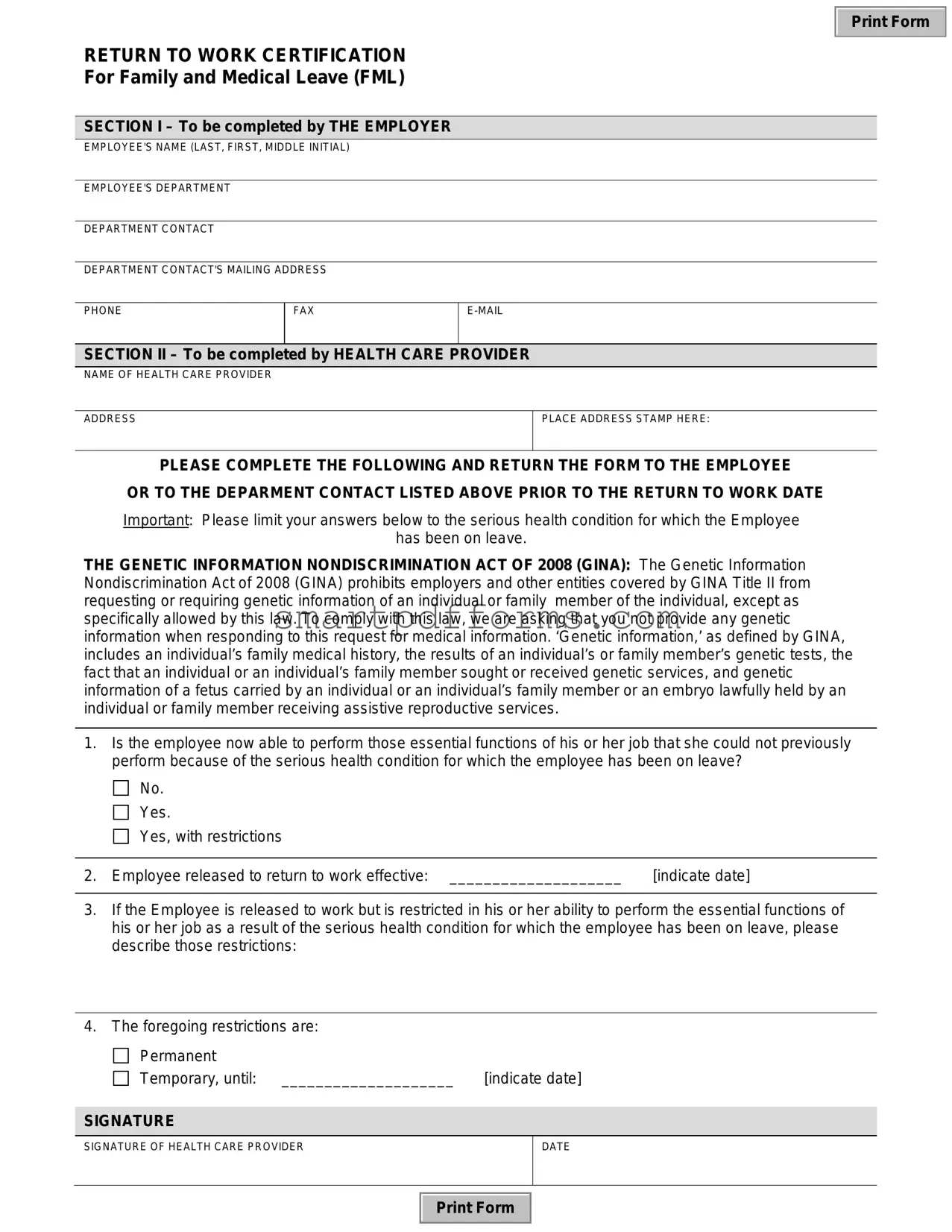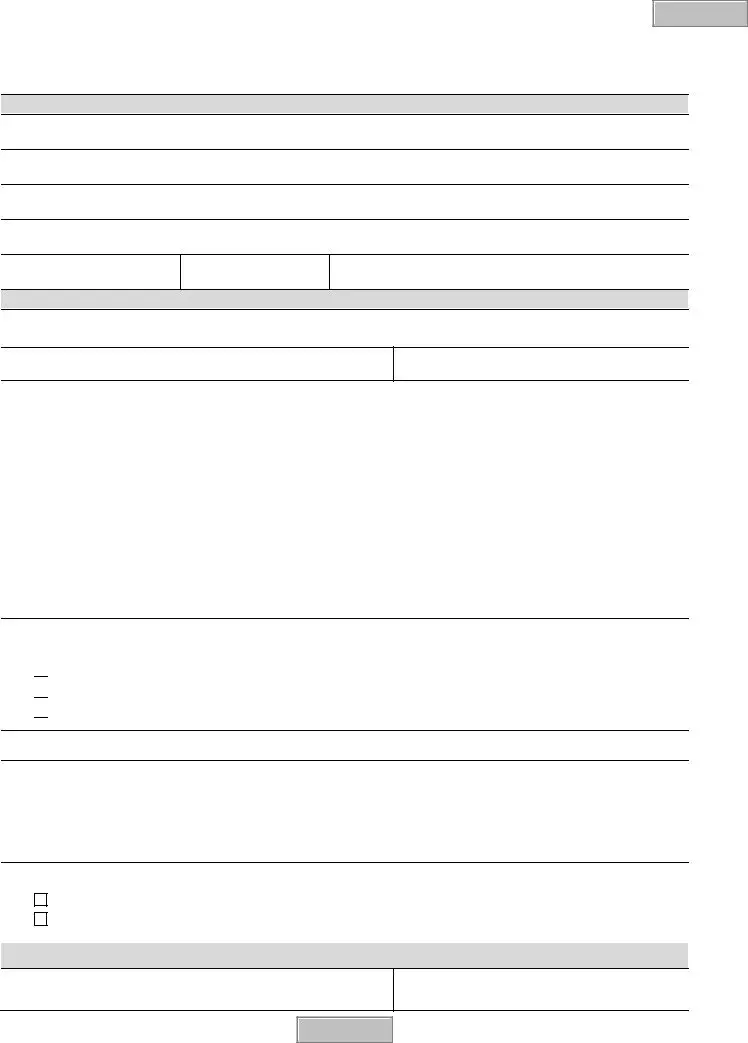Print Form
RETURN TO WORK CERTIFICATION
For Family and Medical Leave (FML)
SECTION I – To be completed by THE EMPLOYER
EMPLOYEE'S NAME (LAST, FIRST, MIDDLE INITIAL)
EMPLOYEE'S DEPARTMENT
DEPARTMENT CONTACT
DEPARTMENT CONTACT'S MAILING ADDRESS
SECTION II – To be completed by HEALTH CARE PROVIDER
NAME OF HEALTH CARE PROVIDER
PLACE ADDRESS STAMP HERE:
PLEASE COMPLETE THE FOLLOWING AND RETURN THE FORM TO THE EMPLOYEE
OR TO THE DEPARMENT CONTACT LISTED ABOVE PRIOR TO THE RETURN TO WORK DATE
Important: Please limit your answers below to the serious health condition for which the Employee
has been on leave.
THE GENETIC INFORMATION NONDISCRIMINATION ACT OF 2008 (GINA): The Genetic Information Nondiscrimination Act of 2008 (GINA) prohibits employers and other entities covered by GINA Title II from requesting or requiring genetic information of an individual or family member of the individual, except as specifically allowed by this law. To comply with this law, we are asking that you not provide any genetic information when responding to this request for medical information. ‘Genetic information,’ as defined by GINA, includes an individual’s family medical history, the results of an individual’s or family member’s genetic tests, the fact that an individual or an individual’s family member sought or received genetic services, and genetic information of a fetus carried by an individual or an individual’s family member or an embryo lawfully held by an individual or family member receiving assistive reproductive services.
1.Is the employee now able to perform those essential functions of his or her job that she could not previously perform because of the serious health condition for which the employee has been on leave?

 No.
No.

 Yes.
Yes.

 Yes, with restrictions
Yes, with restrictions
2. Employee released to return to work effective: ____________________ |
[indicate date] |
3.If the Employee is released to work but is restricted in his or her ability to perform the essential functions of his or her job as a result of the serious health condition for which the employee has been on leave, please describe those restrictions:
4.The foregoing restrictions are:
Permanent |
|
Temporary, until: ____________________ |
[indicate date] |
SIGNATURE
SIGNATURE OF HEALTH CARE PROVIDER



 No.
No.
 Yes.
Yes.
 Yes, with restrictions
Yes, with restrictions